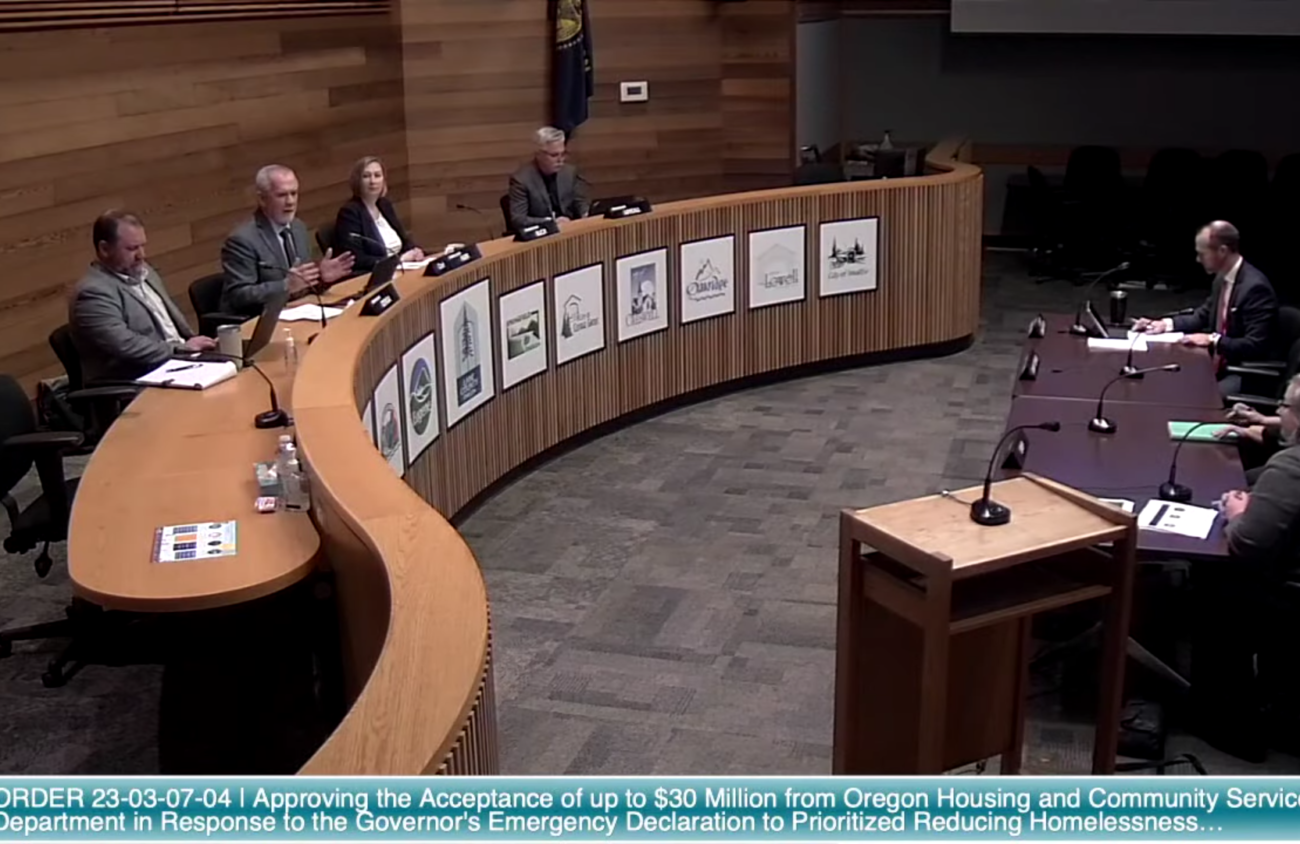The day after Gov. Tina Kotek was sworn into office, she issued an executive order declaring a state of emergency due to homelessness. Kotek’s order directs state agencies to prioritize reducing homelessness, which could mean Lane County government could see an upwards of $22.22 million in one-time funds.
But there’s a catch.
Lane County staff and the Board of County Commissioners discussed the parameters of tens of millions of dollars at a March 7 morning meeting. The county has to design a plan in days that meets Kotek’s three pronged approach to addressing homelessness: preventing new homeless cases, adding shelter beds and re-housing people.
The board voted unanimously to accept up to $30 million from the Oregon Housing and Community Services in response to the governor’s executive order declaring homelessness an emergency.
Kotek’s executive order, signed Jan. 10, directs the Oregon Department of Emergency Management to work with local governments and the Oregon Housing and Community Services to repurpose up to $40 million in responding to homelessness. The goal of her executive order is to prevent 8,750 households from becoming homeless, add 600 low-barrier shelter beds and re-house at least 1,200 unsheltered households.
“We are hearing loud and clear from the state that the governor’s focus is on moving people from unsheltered houselessness into permanent housing, also keeping people from houselessness,” Kate Budd said at the March 7 meeting. Budd is program manager at Lane County Health and Human Services. “In our plan, we are proposing to actually double the number of beds that the state recommended.”
According to meeting materials, Lane County will be expected to meet certain targets by accepting money from the state. This includes preventing 1,578 to 1,753 households from becoming homeless, building 111 to 124 emergency shelter beds and rehousing 223 to 247 households out of homelessness. “We don’t want people to fall back into houselessness again, so we need to make sure that we are very much connecting people to the needed resources,” Budd said.
Budd said that Lane County received a “verbal” offer of about $19 million to $22.22 million, depending on available funding. “It’s been very clear that the state expects these dollars to not supplant, or supplement existing funding,” she said. “That makes things a bit more difficult because there are needs within our existing programs.”
The county’s programs would also offer wraparound funding. This strategy would include money for rent assistance and case management referrals to various support services throughout the county.
The county has until March 17 to submit plans on how it would spend state money to develop programs that would meet those targets. Budd said during the meeting that the Governor’s Office hasn’t been clear with what it expects programs to look like.
Budd said that a strategy of spending the money is to look at ways to improve what the county and cities have. “And that’s where the bulk of the emergency shelter funding would be going,” she said, as opposed to building new emergency shelter beds that the county would have to pay for when the one-time funding runs out Jan. 31, 2024.
Commissioner Pat Farr said that the money, which would go to the county and then shared with community and nonprofits, would be a way to build stronger relationships with other organizations and municipalities. “Solidifying those partnerships and making sure that we’re pulling in the same direction,” he said.
